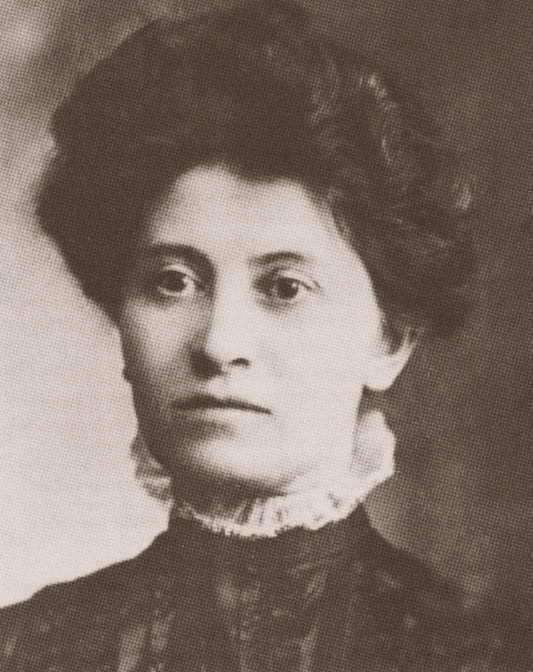National Woman's Day on:
[Wikipedia]
[Google]
[Amazon]
 Woman's Day, also known as National Woman's Day (a
Woman's Day, also known as National Woman's Day (a
 Woman's Day, also known as National Woman's Day (a
Woman's Day, also known as National Woman's Day (a retronym
A retronym is a newer name for an existing thing that helps differentiate the original form/version from a more recent one. It is thus a word or phrase created to avoid confusion between older and newer types, whereas previously (before there were ...
in regard to the later international observance), was a commemoration conceived by labor activist Theresa Malkiel
Theresa Serber Malkiel (1 May 1874 – 17 November 1949) was an American labor activist, Women's suffrage in the United States, suffragist, and educator. She was the first woman to rise from factory work to leadership in the Socialist party. Her 1 ...
, and organized principally in New York City by the Socialist Party of America
The Socialist Party of America (SPA) was a socialist political party in the United States formed in 1901 by a merger between the three-year-old Social Democratic Party of America and disaffected elements of the Socialist Labor Party of Ameri ...
on the last Sunday in February in 1909 and 1910. It was the immediate predecessor to International Women's Day
International Women's Day (IWD) is a global holiday celebrated annually on March 8 as a focal point in the women's rights movement, bringing attention to issues such as gender equality, reproductive rights, and violence and abuse against wom ...
which began to develop globally in 1911, although it was still observed in the United States in February rather than in March for several years.
Background
There is an account of Woman's Day being inspired by an 1857 garment strike in New York City, but this appears to be a fabrication from a French ideological dispute. Neither was it based on a particular strike in 1908, as is sometimes stated. Some American women socialists disagreed with a resolution at the 1907 International Socialist Women's Conference that discouraged cooperation with non-socialist suffrage activists, and subsequently in 1908 the Woman's National Committee led byTheresa Malkiel
Theresa Serber Malkiel (1 May 1874 – 17 November 1949) was an American labor activist, Women's suffrage in the United States, suffragist, and educator. She was the first woman to rise from factory work to leadership in the Socialist party. Her 1 ...
was established by the Socialist Party of America
The Socialist Party of America (SPA) was a socialist political party in the United States formed in 1901 by a merger between the three-year-old Social Democratic Party of America and disaffected elements of the Socialist Labor Party of Ameri ...
and they expressed broad support for suffrage.
The Socialist Party first called in December 1908 for demonstrations for women's suffrage
Women's suffrage is the right of women to vote in elections. Beginning in the start of the 18th century, some people sought to change voting laws to allow women to vote. Liberal political parties would go on to grant women the right to vot ...
in the coming February.
Events
On February 23, 1909, Leonora O'Reilly addressed an audience of 2,000 at the Murray Hill Lyceum.Charlotte Perkins Gilman
Charlotte Perkins Gilman (; née Perkins; July 3, 1860 – August 17, 1935), also known by her first married name Charlotte Perkins Stetson, was an American humanist, novelist, writer, lecturer, advocate for social reform, and eugenicist. She wa ...
also spoke at the Labor Lyceum and Parkside Church in Brooklyn, New York.
On February 27, 1910, Rose Schneiderman
Rose Schneiderman (April 6, 1882 – August 11, 1972) was a Polish-born American socialist and feminist, and one of the most prominent female labor union leaders. As a member of the New York Women's Trade Union League, she drew attention to u ...
, Charlotte Perkins Gilman, and Meta L. Stern spoke at Carnegie Hall
Carnegie Hall ( ) is a concert venue in Midtown Manhattan in New York City. It is at 881 Seventh Avenue (Manhattan), Seventh Avenue, occupying the east side of Seventh Avenue between West 56th Street (Manhattan), 56th and 57th Street (Manhatta ...
, and expressed sympathy for the Philadelphia general strike. This was the first time it was actually known as "Woman's Day". By this year, commemorations were spreading across the United States, as reported in ''The Progressive Woman
''The Socialist Woman'' (1907–1914) was a monthly magazine edited by Josephine Conger-Kaneko. Its aim was to educate women about socialism by discussing women's issues from a socialist standpoint. It was renamed ''The Progressive Woman'' in 1909 ...
''.
On February 25, 1911, May Wood Simons
May Wood Simons (May 10, 1876 – December 3, 1948) was an American socialist writer, editor, teacher and economist .Mari Jo Buhle, ''Women and American Socialism, 1870-1920.'' Urbana, IL: University of Illinois Press, 1981; pp. 166–169. She de ...
and Bertha M. Fraser spoke at Carnegie Hall.
Like International Workers' Day
International Workers' Day, also known as Labour Day in some countries and often referred to as May Day, is a celebration of labourers and the working classes that is promoted by the international labour movement and occurs every year on 1 May, ...
(May Day), International Women's Day originated early in the United States, but achieved greater 20th century popularity outside of that country.
See also
* New York shirtwaist strike of 1909 *Triangle Shirtwaist Factory fire
The Triangle Shirtwaist Factory fire in the Greenwich Village neighborhood of Manhattan, New York City, on Saturday, March 25, 1911, was the deadliest industrial disaster in the history of the city, and one of the deadliest in U.S. history. The ...
References
{{reflist Feminist protests History of New York City History of women's rights in the United States Observances in New York City Socialist Party of America